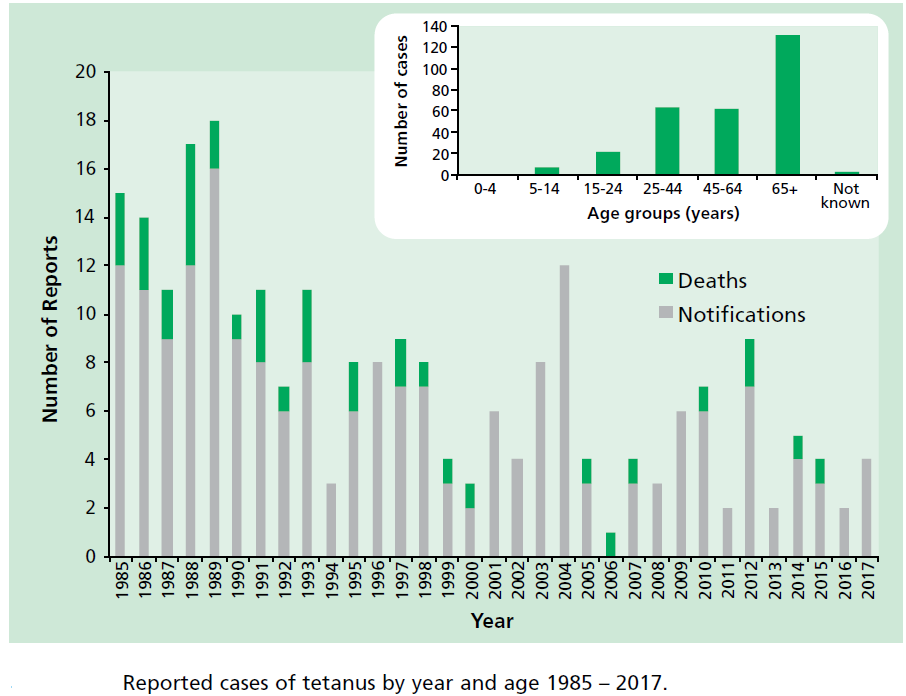Epidemiology
The organism Clostridium tetani is ubiquitous throughout the world (1).
- the WHO reported that about 34,000 newborns died from neonatal tetanus in 2015 (2)
- it is relatively rare in the developed world (1)
In UK,
- Between 1984 and 2017, there were 293 cases of tetanus (combined data from notifications, deaths and laboratory reports) in England and Wales (3)
- sixty three per cent occurred in individuals aged 45 years or over, and 21% were in individuals aged from 25 to 44 years
- highest incidence of tetanus was in adults over 65 years of age
- no cases of tetanus reported in infants or children under five years of age. Eight cases were notified in Northern Ireland between 1984 and 2017
- sixty three per cent occurred in individuals aged 45 years or over, and 21% were in individuals aged from 25 to 44 years

- tetanus in injecting drug users (particularly intramuscular and subcutaneous) is reported rarely in UK, but 24 cases of tetanus were reported in between July 2003 and February 2004 (1)
Tetanus remains an important problem especially in low-income areas, where immunisation coverage is low and unclean birth practices are common. Neonatal tetanus occurs when nonsterile instruments are used to cut the umbilical cord or when contaminated material is used to cover the umbilical stump (2).
More recently there has been a trend to more localised rather than generalised tetanus and the over-all case-fatality rate among all reported cases of tetanus in England and Wales reduced from 29% between 1984 and 2000 to 11% in the following 14 years suggesting the severity of illness may be decreased by partial immunity (4)
- of the 16 deaths reported in England and Wales between 2000 and 2022, 4 were cryptogenic with no reported injury
Reference:
- (1) Taylor MA. Tetanus.Contin Educ Anaesth Crit Care Pain 2006;6(3):101-104
- (2) WHO. Tetanus fact sheet.
- (3) Department of Health (DH). Immunisation against infectious disease. 'The Green Book' 2019 updated edition
- (4) UK Health Security Agency (September 2023). Guidance on the management of suspected tetanus cases and the assessment and management of tetanus-prone wounds
Create an account to add page annotations
Annotations allow you to add information to this page that would be handy to have on hand during a consultation. E.g. a website or number. This information will always show when you visit this page.